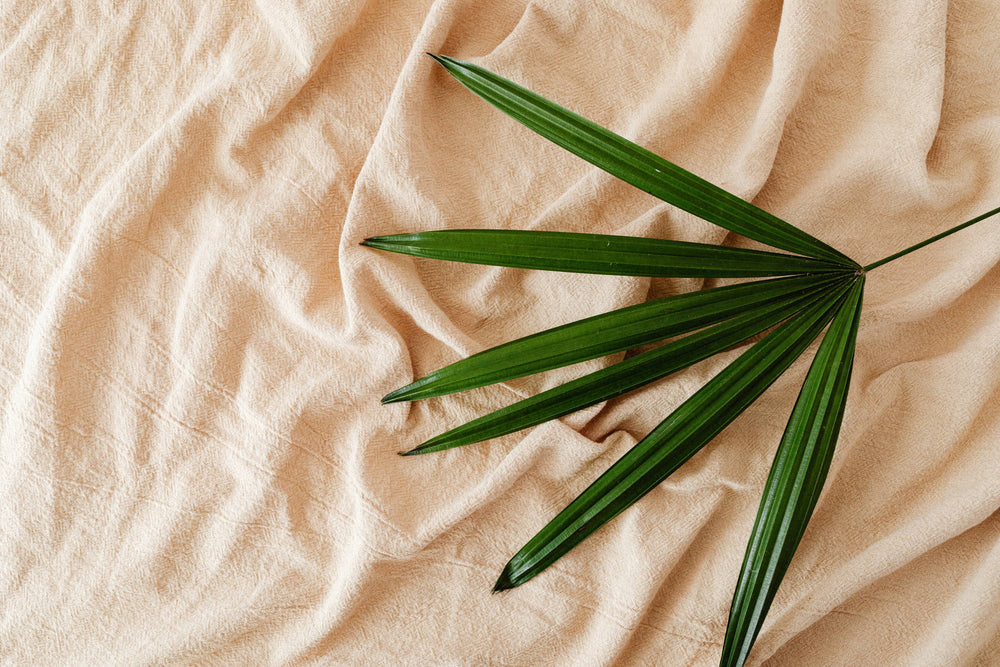
Bamboo Underwear Does Not Exist. Here's Why.
|
If you're not happy with your first pair of underwear after trying it on, let us know.
We'll send a new size or color, or give you a refund. No returns needed.

Paulina Kwik
|
We’ve all seen bamboo underwear women can wear (and that men can wear, too), bandied about in the sustainable clothing world, but did you know that it doesn’t exactly exist? Yep, when they process bamboo fiber into fabric, it becomes rayon or viscose, which bears little resemblance to those bamboo panties that are lauded as an eco-friendly choice.
However, even though bamboo underwear doesn’t technically exist, and bamboo doesn’t necessarily make one of the most sustainable fabrics out there, it can still be a decent option for sustainable underwear.
I’ll walk you through how it’s made, the pros, and the comparison to other sustainable materials, such as hemp vs bamboo, so you can make your own informed choices when you spy “bamboo underwear women love!” on your shopping expeditions.
Bamboo is actually part of the grass family—hence the phrase “bamboo shoots”—that is grown mostly in Asia, in parts of China, Japan, and so forth. It can also be found in parts of South America, Africa, and Australia. The process of growing bamboo can be very eco-friendly, as bamboo:
As you can see, bamboo is off to a very promising start when it comes to sustainability! However, it is not regulated, and often pesticides are used to speed the growing process, or old growth forests are cleared to make room for bamboo.
But the part where it truly goes off the sustainability rails is when the bamboo is processed into fabric. Let’s discuss, shall we?
Bamboo fabric is linen or rayon made from bamboo. Bamboo linen, which is the greener choice, is made painstakingly through a mechanical process. This means it retains the benefits of bamboo, as well as being greener, but unfortunately, is not a very soft fabric, and is not ideal for underwear.
To use bamboo for underwear, it’s chemically processed into rayon, or viscose. Unfortunately, the process needed to make this wonder plant soft enough to wear in our most sensitive areas essentially removes all the good stuff, which in turn, makes it not so good for us. Plus, the viscose process is especially harmful to the environment, as well as the humans that work with it.
Now it’s time for some serious science! To decide once and for all that bamboo underwear is a Real Thing, we sent off a pair claiming to be womens bamboo underwear to the lab for some further testing. Here are the results:
For Full Transparency - Download Full Report Here.
So, as you can see, although this is a very well known bamboo underwear brand (that shall remain nameless), the test results merely say that the underwear is made of rayon. This brand does call it “viscose made from bamboo,” which is a plus, but can also be misleading or confusing when there are still “bamboo underwear” claims on their website/product. Most customers don’t delve deep into these types of statements, and can get tricked into thinking this is real bamboo underwear when, as the results show, it’s just rayon. See full results here!
I’m not a total downer on bamboo, I swear! Bamboo itself is a very eco-friendly plant. And if a company is transparent with where and how they grow it and how they use it to make fabric, it can be a great option. Here are some more of the pros:
Okay, so underwear made from bamboo rayon isn’t always the worst. But, from a sustainability perspective, here are some fabrics that make even greener underwear.
Oh we love ya, hemp! Not only is hemp better for the environment, it also makes a great choice for your triangle bralette, or those high waisted underwear. Hemp is stretchy, comfortable, antibacterial and naturally UV-protectant.
Yep, wool makes great underwear—well, merino wool, that is. Merino wool is natural and sustainable (although make sure you know how those sheep are being treated!), as well as antibacterial and moisture-wicking. It’s definitely one of the stars of the sustainable fabric world.
Cotton is usually the most recommended fabric by ob/gyns for women, since it’s so breathable, which is especially necessary for your vag area. However, conventional cotton is not great for our mama Earth (peep more info about organic cotton vs cotton), so make sure to buy organic!
As mentioned above, Tencel can be made from plant materials into fabric, using a closed-loop system, which is better for us and the planet. If the pulp, generally from wood, is harvested sustainably, Tencel can be a great choice for underwear, since it’s stretchy and breathable.
I know you may want to run screaming when you hear the words “polyester” and “underwear” in the same sentence, and who could blame you? However, recycled polyester has been developed for sustainable fashion, and actually makes some great underwear! Recycled polyester has a smaller carbon footprint than virgin (OG) polyester, and can often be recycled again at the end of its life, unlike standard polyester. It also diverts plastic from our landfills and repurposes it, usually by using old water bottles. Cool.
There ya have it. Bamboo panties ain’t real, even though it’s enticing to purchase a pair marketed as bamboo underwear women can wear comfortably. However, bamboo fabric production has some interesting implications when it comes to greener fashion, and when a company is truly transparent, it can be a good choice for your eco-friendly wardrobe.
Did you know that bamboo underwear isn’t a thing? Have you worn underwear claiming to be bamboo panties? Discuss below!
Get updates on restocks, new color and size releases, and upcoming product launches. You’ll also get a 15% discount on your first order of hemp underwear.


